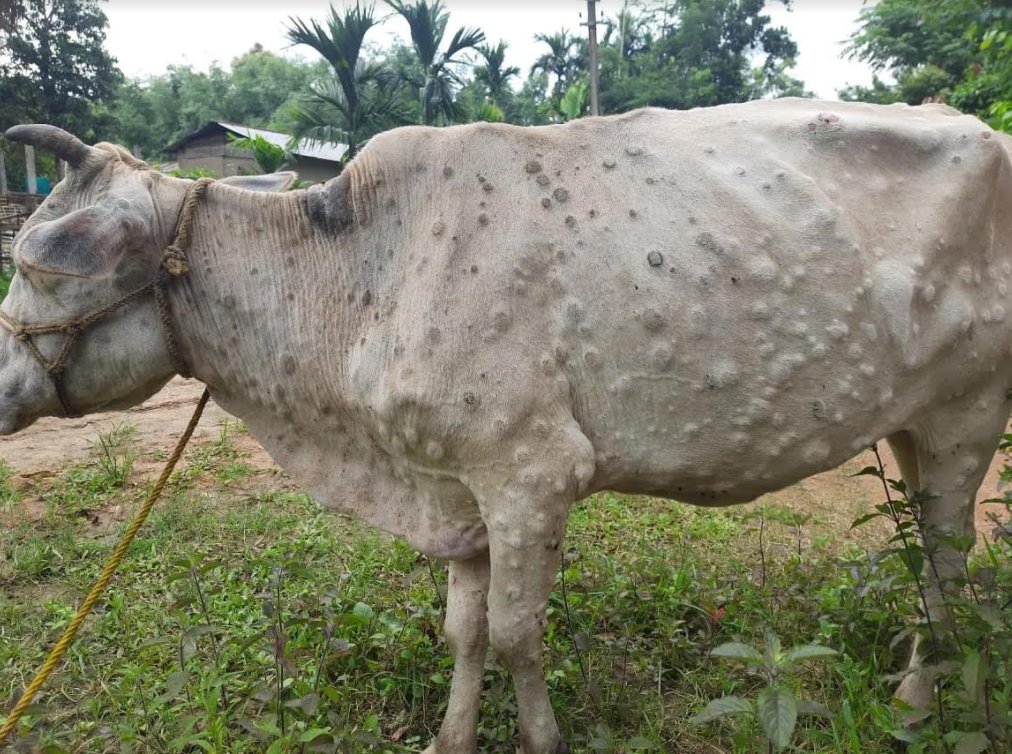
Annual Report No : 2
Highlights of #Hesterbiosciences Annual Report FY 21
Like & retweet for max reach ! 🐤🐥
1. About
Hester Biosciences is one of the biggest animal and poultry healthcare companies in India engaged in manufacturing of vaccines and healthcare products.
Highlights of #Hesterbiosciences Annual Report FY 21
Like & retweet for max reach ! 🐤🐥
1. About
Hester Biosciences is one of the biggest animal and poultry healthcare companies in India engaged in manufacturing of vaccines and healthcare products.

The sole focus of the company is to improve the health quality of animals and poultry by monitoring and preventing and curing diseases through seamless supply of vaccines and medicines and supplements.
Hester also works with customers and offers technical services to provide health solutions.
2. Revenue Split
The domestic business of Hester accounted for 81% of revenues whereas exports accounted for 10%. The remaining 9% came from other geographies.
2. Revenue Split
The domestic business of Hester accounted for 81% of revenues whereas exports accounted for 10%. The remaining 9% came from other geographies.

Revenue for FY21 was ₹208.4 crores of which ₹169.3 crores was from the domestic business and ₹21.5 crores was from exports.
Hester Biosciences is mainly focused on two segments - animal healthcare and poultry health care
Hester has a wide range of 48 poultry vaccines (single and combinations), 3 large animal vaccines, medicines, feed supplements and disinfectants for poultry and large animals.
Hester has a wide range of 48 poultry vaccines (single and combinations), 3 large animal vaccines, medicines, feed supplements and disinfectants for poultry and large animals.

3. Performance for FY21
Exports were down during the year due to Covid causing disruptions in supply chains, but the strong performance of the domestic segment was able to offset it. The Poultry Health Division showed a growth of 25% and the Animal Health Division registered a
Exports were down during the year due to Covid causing disruptions in supply chains, but the strong performance of the domestic segment was able to offset it. The Poultry Health Division showed a growth of 25% and the Animal Health Division registered a
growth of 19% year on year.
Hester Nepal registered a loss of ₹0.97 crores with a turnover of ₹4.7 crores in FY21.
Hester Tanzania is still in the progressive stage, trying to establish its presence in markets of Tanzania as well as East African markets.
Hester Nepal registered a loss of ₹0.97 crores with a turnover of ₹4.7 crores in FY21.
Hester Tanzania is still in the progressive stage, trying to establish its presence in markets of Tanzania as well as East African markets.
The African subsidiary is progressing well. The project construction is complete and they hope to release the first batches of locally manufactured PPR vaccines and Newcastle disease vaccine in this financial year.
4. New ventures
Poultry accounted for 73% of their portfolio for FY21, however, going ahead, Hester plans to build their large animal business as they see a very high potential for growth in this area. Hester has deepened their innovative and capital base.
Poultry accounted for 73% of their portfolio for FY21, however, going ahead, Hester plans to build their large animal business as they see a very high potential for growth in this area. Hester has deepened their innovative and capital base.
They partner with other companies to get the technology required for developing vaccines for the emerging diseases.
Hester has also tied up with Bharat Biotech under a licensing agreement to manufacture COVAXIN.
Hester has also tied up with Bharat Biotech under a licensing agreement to manufacture COVAXIN.
The capacity for the manufacturing of the drug substance for Bharat Biotech, we would be producing approximately 70 lakh doses.
They have entered into an agreement with ICAR-IVRI (Indian Council of Agricultural Research – Indian Veterinary Research Institute) for getting
They have entered into an agreement with ICAR-IVRI (Indian Council of Agricultural Research – Indian Veterinary Research Institute) for getting
technologies to develop vaccines for classical swine fever, sheep pox and lumpy skin disease. The technology for these vaccines has been developed but these vaccines are still under trial. Hester has also recently launched a herbal division and they hope
this division will contribute to their growth. This division will focus mainly on chronic illnesses in the animals. 

Lumpy Skin Disease (LSD) in cattle is an emerging disease in India, which is of economic importance for cattle farmers. Hester is the only Company in India who has an LSD vaccine under development. LSD is endemic in most African and Middle Eastern countries. 

5. Product range
Hester’s products and services portfolio comprises more than 51 vaccines and 70+ health products. The company provides more than 48 products across poultry vaccines. Hester has decided to focus on herbal products and move away from antibiotics.
Hester’s products and services portfolio comprises more than 51 vaccines and 70+ health products. The company provides more than 48 products across poultry vaccines. Hester has decided to focus on herbal products and move away from antibiotics.
Most new products to be launched by the company would be natural or herbal in nature for both poultry as well as animal division
6. Manufacturing facilities
Hester has three state-of-the-art manufacturing units for vaccine, health products and diagnostics. Based in Ahmedabad, Gujarat, Hester’s first manufacturing unit is located in Kadi, Mehsana district of Gujarat.
Hester has three state-of-the-art manufacturing units for vaccine, health products and diagnostics. Based in Ahmedabad, Gujarat, Hester’s first manufacturing unit is located in Kadi, Mehsana district of Gujarat.
It is the largest animal biological manufacturing facility in Asia. The Company’s second unit is located in Kathmandu, Nepal. Hester has an installed manufacturing capacity of 6.25 billion doses in India and 1.24 billion doses in Nepal. 

• • •
Missing some Tweet in this thread? You can try to
force a refresh







